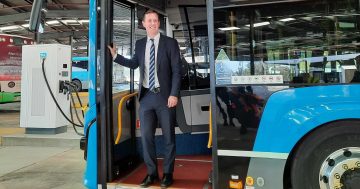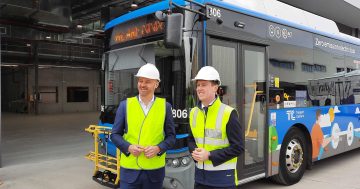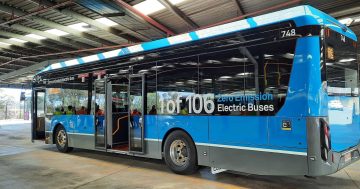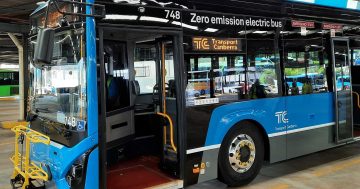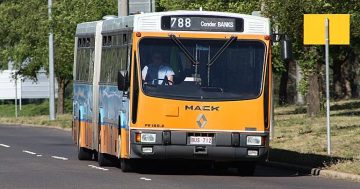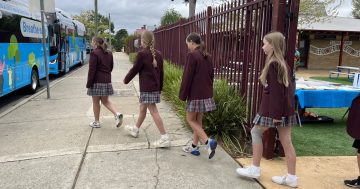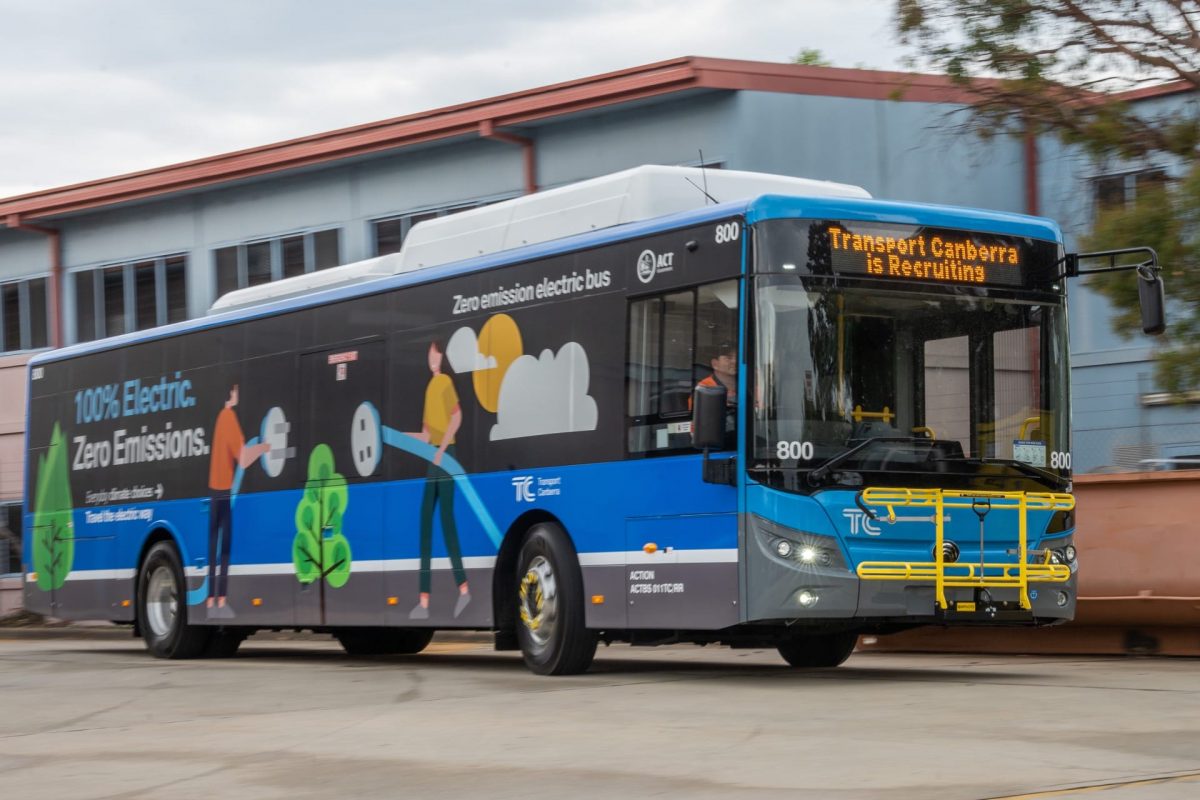
The ACT’s first electric bus is now on the road and more are coming. Photo: ACT Government.
Woden and Tuggeranong bus depots will be wired up to charge as many as 300 electric buses, with the ACT Government announcing a start on the electrical infrastructure required to transition to a zero-emissions fleet.
At a cost of $26.3 million over three years, utility company Evoenergy will install high voltage cables spanning 11.9 kilometres to support the new Woden Bus Depot, with the capacity to charge up to 100 buses, and upgrade Tuggeranong depot to charge up to 200 buses.
The two depots will be connected via two new 11 kV dedicated underground feeders from Evoenergy’s Wanniassa Zone substation to help manage maximum demand of up to 12.2 megavolt amperes (MVA) at Tuggeranong and 5.1 MVA at Woden.
The design phase of these works commenced this month and is on track to be completed in the first half of this year ahead of construction.
Evo Energy says that construction works on the cables for both depots should be finished around mid-2024 in time for the planned delivery of the next tranche of electric buses being procured.
The new Woden depot in Phillip is expected to be completed in late 2024.
The government says that with the first of Canberra’s 12 leased electric buses now on the road, the announcement locks in the supporting electrical infrastructure required to operate the 90 electric buses under procurement which the Territory will own.
There is still no firm timeline for these 90 buses to be delivered, but they are expected within three years.
Work is progressing on internal electric works at the Tuggeranong and Belconnen Bus Depots to increase electrical capacity to enable more flexible charging arrangements in the short term.
Each of the 12 leased buses will be able to travel up to 400 kilometres a day and be charged overnight for between three-and-a-half and four hours. The 11 still to be deployed are being kitted out for service.
Chief Minister Andrew Barr said the $26 million investment was part of the government’s plan to electrify public transport, reduce emissions and lower the ongoing operating costs of the bus fleet.
“Importantly, we have made this investment through the Budget so that the impacts of transitioning to a zero-emission public transport network are not passed onto Canberrans through their household electricity bills,” he said.
Transport and City Services Minister Chris Steel said the project meant the government could progressively roll out new bus technology across the city over the coming years to grow the zero-emission fleet.
“This is a significant day for public transport in Canberra as we transition to zero-emission transport,” he said.
“Our transition plan has never just been about buying electric buses, it is about building the grid and charging infrastructure to support them and upskilling our staff to maintain and operate this new technology.”
Mr Steel said the electric buses would integrate with an expanded, mass-transit light rail network, with both transport modes running on 100 per cent renewable electricity.
“Our combined investments represent the biggest improvement to Canberra’s public transport system in a generation,” he said.
“This will give every Canberran the opportunity to play their part in taking real action on climate change and provide more comfortable and convenient ways to get around our city,” he said.













